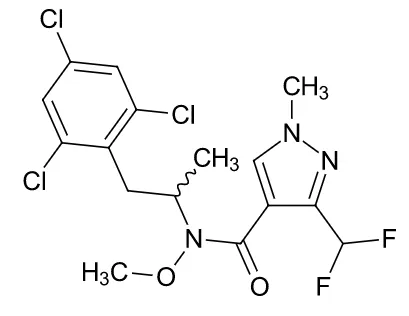
Dec . 11, 2024 03:04 Back to list
Methylamino Abamectin Benzoate Pricing and Market Trends Overview
The Significance of Methylamino Abamectin Benzoate A Comprehensive Overview
Methylamino abamectin benzoate is an intriguing compound that merges the properties of a plant protection agent and veterinary medicine. With the global agricultural industry continuously seeking innovative solutions to combat pests and enhance crop yields, this compound has garnered attention for its efficacy and application potential. This article aims to elucidate the importance of methylamino abamectin benzoate, detailing its mechanisms of action, applications, advantages, and considerations for use.
Understanding Methylamino Abamectin Benzoate
Methylamino abamectin benzoate is a semi-synthetic derivative of avermectin, a group of macrocyclic lactones that originate from the fermentation of the bacterium Streptomyces avermitilis. Avermectins have established themselves as vital components in both agriculture and veterinary medicine due to their ability to control a wide range of pests and parasites.
The methylamino group enhances the stability and efficacy of the compound, allowing it to address various agricultural challenges effectively. This benzoate form retains the pesticide properties of avermectins while improving its physical and chemical characteristics, making it suitable for different formulations.
Mechanism of Action
The primary mechanism of action of methylamino abamectin benzoate lies in its ability to disrupt neural transmission in pests. It binds to specific glutamate-gated chloride channels and gamma-aminobutyric acid (GABA) receptors, leading to an influx of chloride ions into the nerve cells. This action ultimately results in paralysis and death of the targeted pests, effectively controlling populations of harmful insects such as mites, aphids, and various caterpillar species.
The specificity of this compound is noteworthy; it primarily targets arthropods while showcasing minimal toxicity to beneficial insects when applied correctly. This feature is vital for integrated pest management (IPM) strategies, as it allows for the preservation of natural pest predators within the ecosystem.
Applications in Agriculture
Methylamino abamectin benzoate finds extensive use in agriculture, particularly in the cultivation of crops such as cotton, vegetables, and fruit trees
. Its application can be tailored according to the specific pest threats faced by farmers, making it a versatile option.methylamino abamectin benzoate quotes

The use of this compound is not limited to pest control; it also plays a role in promoting plant health. By minimizing pest damage, plants can allocate more resources toward growth and yield enhancement. Additionally, well-managed applications can lead to higher quality produce, ultimately benefiting both consumers and farmers.
Advantages of Methylamino Abamectin Benzoate
1. Effective Pest Control Methylamino abamectin benzoate provides potent control over various agricultural pests. Its efficacy is often noted even at low concentrations, making it a cost-effective option.
2. Reduced Environmental Impact As a selective agent, this compound poses minimal risks to non-target species, including beneficial insects, birds, and mammals. This characteristic aligns with sustainable agricultural practices that prioritize ecological health.
3. Resistance Management The unique mode of action of methylamino abamectin benzoate makes it a valuable tool in resistance management programs. By rotating it with other classes of insecticides, farmers can effectively mitigate the risk of pest resistance development.
4. Compatibility with Other Agrochemicals The compound can be used in combination with other pesticides and fertilizers, enhancing its versatility and applicability in diverse agricultural settings.
Considerations and Best Practices
While methylamino abamectin benzoate holds significant promise, it is essential for users to adhere to recommended application rates and safety guidelines. Proper training in the handling and application techniques is vital to maximize efficacy while minimizing risks to health and the environment. Additionally, farmers should monitor pest populations and assess the compound's performance continually to ensure sustainable use.
Conclusion
Methylamino abamectin benzoate represents a promising advancement in pest management strategies within agriculture. Its unique properties, combined with sustainable practices, highlight its potential to address current agricultural challenges. As the global demand for food continues to rise, embracing innovative solutions like methylamino abamectin benzoate is imperative for ensuring a productive and sustainable agricultural future. In conclusion, maintaining vigilance and expertise in its application will safeguard both environmental and agricultural integrity.
-
Best Abamectin 95% | Top Pesticide for Crop Protection
NewsJul.31,2025
-
Insecticide Spirotetramat 11% + Thiacloprid 11% SC at Good Price
NewsJul.30,2025
-
Best Abamectin SDS - Premium Quality & Reliable Safety Data
NewsJul.29,2025
-
Agrochemicals Pesticides Solutions for Sustainable Farming
NewsJul.29,2025
-
High-Quality Tebuconazole Fungicide for Crop Protection at Best Price
NewsJul.29,2025
-
Chlorfenapyr 8% + Clothianidin 20%SC Pesticide Mixture for Effective Pest Control
NewsJul.28,2025
